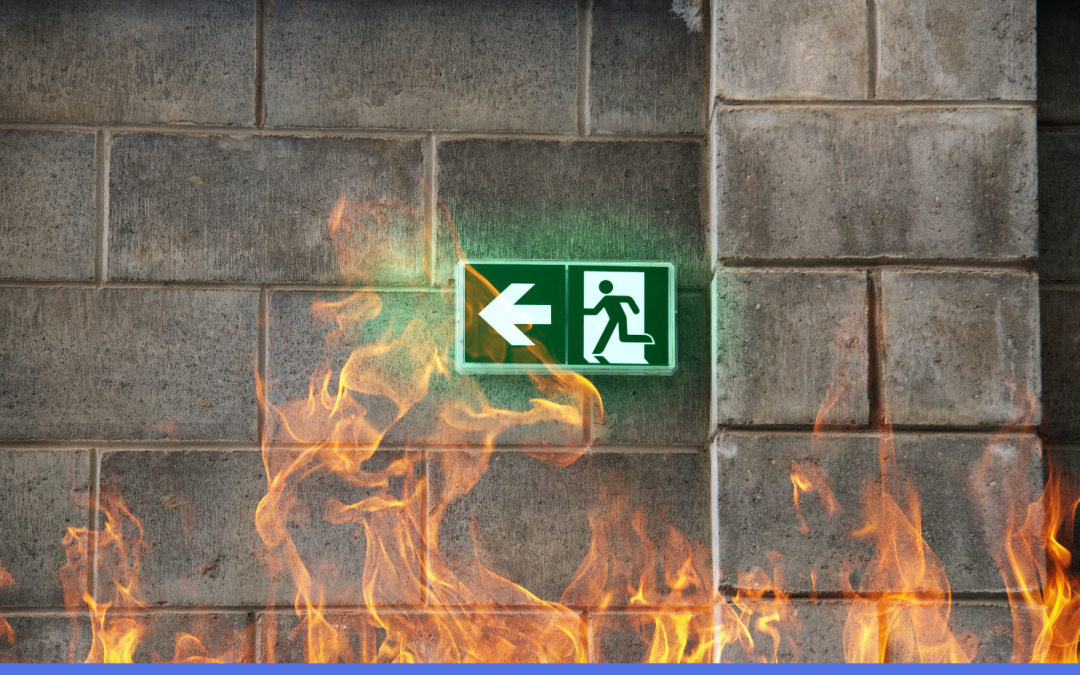Maintaining a thorough fire risk assessment is one of the most significant factors for ensuring a safe and secure workplace. It is extremely important for the HSE team to identify any potential fire hazards, evaluate risks, and implement steps to reduce or eliminate them.
The safety team should make sure to develop effective fire safety procedures, such as evacuation routes and equipment. Regular assessments help to comply with regulations, prioritize safety tasks, prevent costly damages, and protect lives. A fire risk evaluation should fulfill a range of conditions, such as:
- Providing a comprehensive and sufficient assessment of the fire risk;
- Noting critical discoveries and actions to diminish and manage the fire risk;
- Identifying any particular groups of individuals particularly vulnerable to risk;
- Being a documented account (where there are five or more employees);
- They are being periodically revised to account for changes in the site, technical and organizational measures, work methods, and schedules.
Accountable Individual for conducting a fire risk assessment.
In the UK, the responsible person for completing a fire risk assessment is typically the owner, occupier, employer, or other person who has control of the premises. In the US, the National Fire Protection Association (NFPA) 101 Life Safety Code requires a qualified individual, such as a fire protection engineer or architect, to conduct the assessment.

Steps for Fire Safety Risk Assessment
The risk assessment process for fire safety in an office setting involves five key steps:
1. Identify Fire Hazards
The first step is identifying all potential fire hazards within the office premises. This includes assessing flammable materials, electrical equipment, and other items that could contribute to a fire.
2. Identify People at Risk
The next step is to assess who is at risk in case of a fire. This includes identifying individuals with mobility issues, visual or hearing impairments, or other conditions that may make it difficult to evacuate the building quickly.
3. Evaluate and Decide
After identifying the hazards and people at risk, the responsible person must evaluate the current fire safety arrangements to determine if they are satisfactory or need improvement. This may involve reviewing fire detection and alarm systems, escape routes, and firefighting equipment.
4. Record Findings and Produce an Emergency Plan
The fourth step is to record the risk assessment findings and produce an emergency plan. This plan should outline the procedures for responding to a fire, including evacuation routes, assembly points, and contact information for emergency services.
5. Train and Inform
Finally, the responsible person must ensure all employees are informed and trained on the fire safety procedures. This includes providing information on the emergency plan, conducting fire drills, and ensuring that all employees know their responsibilities in case of a fire.
Challenges Encountered During the Fire Risk Assessment Process
- Conducting a post-decision risk assessment to confirm its validity.
- Opting for a generic assessment rather than a site-specific one.
- Applying unsuitable practices for the risk assessment.
- Failing to involve all relevant stakeholders in the assessment process.
- Failing to identify all hazards.
- Refraining from anticipating all possible outcomes.
- Overlooking the hierarchy of controls.
- Failing to take action based on the risk assessment, such as implementing control measures.
- Refrain from communicating the risk assessment results to the relevant parties.
Fire Safety Plan
A fire safety plan is a crucial document mandated by the Occupational Safety and Health Administration (OSHA) to guide organizations in responding to fire incidents.
It outlines essential emergency procedures, such as routine fire safety checks, employee training, notifying the fire department, and evacuation procedures. Failure to prepare a fire safety plan can lead to legal issues, property damage, employee injuries, or fatalities.
The significance of a fire safety plan lies in its ability to prevent injuries, costly damages, and potential fines during a fire incident. It aims to:
- Identify critical equipment requiring shutdown.
- Provide instructions for emergency services.
- Outline procedures for activating emergency alarms.
- Offer support for individuals with disabilities.
- Share evacuation strategies comprising protocols and egress pathways.
Employers are responsible for ensuring employees’ safety by communicating and reviewing fire safety plans with current employees every 90 days and upon hiring new staff. Updating the plan is recommended as needed or at least annually.
A Fire Prevention Plan Should Include
- Identification of significant fire hazards.
- Appropriate management and storage protocols for dangerous substances (HAZMAT)
- Potential ignition sources and necessary fire protection equipment.
- Procedures for controlling flammable and combustible waste materials.
- Maintenance procedures for heat-producing equipment safeguards to prevent accidental ignition.
- Notification procedures for employees and fire response organizations.
- Designation of employees responsible for maintaining equipment and controlling fuel source hazards.
- Procedures for ensuring the whereabouts of all staff post-evacuation.
Fire Safety Plan Comprises of Three Key Elements
- FIRE PREVENTION
Prioritizing prevention through worker training, fire risk assessments, and comprehensive checks using fire safety checklists.
- FIRE FIGHTING
Regularly inspect active fire protection equipment to ensure functionality, along with careful planning and design of fire fighting and protection systems.
- EMERGENCY EVACUATION
- Ensuring everyone is familiar with emergency evacuation plans, including contact details, emergency exit maps, and fire drill readiness assessments.
Developing A Fire Emergency Preparedness Plan
Fire emergency preparedness involves several vital steps to ensure the safety of employees and the protection of property:
- Develop clear emergency protocols, evacuation procedures, and communication plans. Provide training to relevant personnel and conduct regular drills.
- Maintain a functional fire alarm system and use emergency alert applications for quick notifications.
- Create detailed evacuation plans, identify exit routes, and designate assembly points. Display evacuation maps prominently for easy reference.
- Ensure clear signage indicating exits and locations of fire-fighting equipment.
- Make essential fire-fighting equipment, such as fire extinguishers, hose reels, and fire blankets, easily accessible. Train staff on equipment usage and conduct regular maintenance checks.
- Designate fire wardens for evacuations and ensure plans for employees with special needs. Provide training and periodic refreshers to designated personnel.
- Practice drills to familiarize employees with evacuation procedures. Test alarms regularly to ensure functionality and staff awareness.
- Establish contingency plans tailored to the business’s needs. Confirm staff safety through mobile surveys, safeguard vital information, and centralize essential documents for quick emergency access.
Conclusion
You should ensure workplace safety through comprehensive fire risk assessments and fire safety plans. The safety team and everyone at the workplace must stay alert and identify hazards.
Your safety team should have a prompt plan to evaluate risks, implement controls, and update plans regularly. Prioritize employee safety through training and communication. Establish fire emergency preparedness plans with evacuation strategies, alert systems, evacuation routes, firefighting tools, and trained personnel responsibilities.
By adhering to these guidelines and continuously improving fire safety measures, organizations can create a safer work environment, reduce the risk of injuries and damages, and ensure swift and effective responses to fire emergencies.

